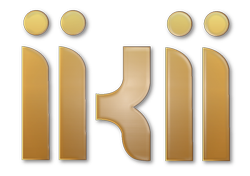Research Article
Design and Practice of STEAM Interactive LED-Cube Teaching Aids
More Detail
1 dept. of Digital Multimedia Design, Cheng-Shiu University, Taiwan* Corresponding Author
Educational Innovations and Emerging Technologies, 4(1), 2024, 20-27, https://doi.org/10.35745/eiet2024v04.01.0003
Published: 12 June 2024
OPEN ACCESS 887 Views 606 Downloads
ABSTRACT
STEAM education endeavors to integrate Science, Technology, Engineering, Arts, and Mathematics into interdisciplinary learning. The development of interactive media design requires proficiency not only in programming and art but also in integrating emerging technologies and artistic concepts across various disciplines. However, existing curriculum frameworks frequently face challenges in adequately instructing and integrating skills relevant to interactive media development, including programming, 3D modeling, animation, and presentation. Due to limited knowledge, abilities, and time, students are hesitant to experiment with different display methods for showcasing their work. Despite recognizing the importance of cross-disciplinary integration, students' limited resources and learned abilities reduce their willingness to put this into practice. Therefore, we propose to provide a toolkit that allows students to learn and simplify the integration process of interactive media development, thereby encouraging students to have the intention of cross-domain collaborative creation and to implement the STEAM educational approach.
The project focuses on designing Arduino modules integrated with Unity to implement a real-time display LED cube system, RLDS. Bluetooth or WiFi technology will be utilized to achieve the scalability of the LED cube modules. A communication package facilitates transmission of interactive data between the 3D content system and the Arduino-based LED cube display system. We anticipate that through the use of such RLDS teaching aids, students can learn various integrated applications of digital media technologies, which can be beneficial for their future interactive media creations.
The project focuses on designing Arduino modules integrated with Unity to implement a real-time display LED cube system, RLDS. Bluetooth or WiFi technology will be utilized to achieve the scalability of the LED cube modules. A communication package facilitates transmission of interactive data between the 3D content system and the Arduino-based LED cube display system. We anticipate that through the use of such RLDS teaching aids, students can learn various integrated applications of digital media technologies, which can be beneficial for their future interactive media creations.
CITATION (APA)
Liu, F.-J., & Tseng, C.-W. (2024). Design and Practice of STEAM Interactive LED-Cube Teaching Aids. Educational Innovations and Emerging Technologies, 4(1), 20-27. https://doi.org/10.35745/eiet2024v04.01.0003
REFERENCES
- Al-Masri, E., Kabu, S. & Dixith, P. (2020). Emerging Hardware Prototyping Technologies as Tools for Learning. IEEE Access, 8, 80207–80217. https://doi.org/10.1109/ACCESS.2020.2991014.
- Arduino—An open-source electronics platform. Available online: https://www.arduino.cc/ (accessed on February 1, 2024).
- Becker, K. H., & Park, K. (2011). Integrative approaches among science, technology, engineering, and mathematics (STEM) subjects on students’ learning: A meta-analysis. Journal of STEM Education: Innovations and Research, 12(5), 23–37.
- Danijel Danković, Miloš Marjanović, Nikola Mitrović, et al. (2023). The Importance of Students’ Practical Work in High Schools for Higher Education in Electronic Engineering. IEEE Transactions on Education, 66(2), 146–155. https://doi.org/10.1109/TE.2022.3202629
- Derek Wu. (2020). Arduino 8x8x8 LED Cube. Available online: https://crazymaker.com.tw/arduino-8x8x8-led-cube/ (accessed on February 1, 2024).
- Hadiyanto, H. (2010). The Development of Core Competencies at Higher Education: A Suggestion Model for Universities in Indonesia, EDUCARE. International Journal for Educational Studies, 3(1), 11–22.
- Fu, J. (2015). Teaching method research based on Arduino platform. In 2015 Sixth International Conference on Intelligent Systems Design and Engineering Applications (ISDEA), August 18–19, Guiyang, China, pp. 798–801. https://doi.org/10.1109/ISDEA.2015.201
- Norman, D. A. (2010). Why design education must change. Core 77. https://www.core77.com/posts/17993/why-design-education-must-change-17993 (accessed on February 1, 2024)
- Suman, P., Rajena, P., Deepak, R. et al. (2019). Wi-Fi based scrolling digital display with RTC using Arduino. In 2019 2nd International Conference on Intelligent Communication and Computational Techniques (ICCT). September 28–29, 2019; Jaipur, India, pp. 199–202. https://doi.org/10.1109/ICCT46177.2019.8969057
- Tzapu. (2024). WiFi Manager. Available online: https://www.arduino.cc/reference/en/libraries/wifimanager/ (accessed on February 1, 2024)
- Unity Engine. Available online: https://unity.com/ (accessed on February 1, 2024).
- Zhou, R., Liu, L., & Yu, J. (2021). Factors influencing K-12 STEM teachers' interdisciplinary teaching competency. In 2021 Tenth International Conference of Educational Innovation through Technology (EITT), December 16–20, 2021; Chongqing, China. pp. 88–94. https://doi.org/10.1109/EITT53287.2021.00026
- Zlatanov, N. (2015). Arduino and Open Source Computer Hardware and Software. Available online: https://www.researchgate.net/publication/297734853_Arduino_and_Open_Source_Computer_Hardware_and_Software?channel=doi&linkId=56e1f99208ae4e3e9428202e&showFulltext=true (accessed on February 1, 2024).

 OPEN ACCESS
OPEN ACCESS

 The articles published in this journal are licensed under the CC-BY Creative Commons Attribution International License.
The articles published in this journal are licensed under the CC-BY Creative Commons Attribution International License.